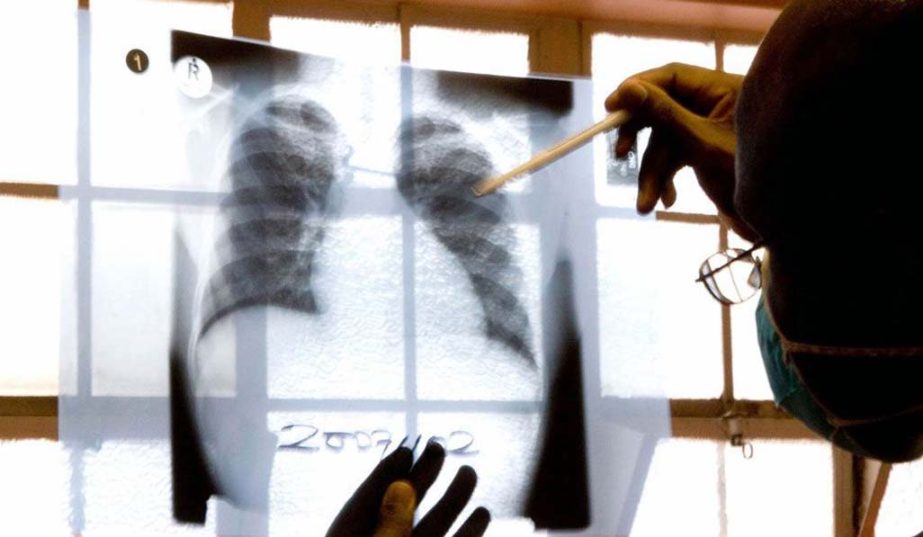
Life Desk :
Tuberculosis (TB) incidence is noticeably high in the regions of South-East Asia. WHO target is to achieve global eradication of tuberculosis by 2030. Health Ministers have pledged to scale efforts, implement adequate funds and to take comprehensive measures to put an end to the disease.
The ministers discussed setting up of a Regional Innovation to Implementation (I2I) fund for accelerated sharing of knowledge, intellectual resources and innovations to reach out and treat all cases.
‘WHO aims to reduce mortality from tuberculosis by 90 percent, and incidence by 80 percent, by 2030.’
The World Health Organization (WHO) also urged the countries to increase budgetary allocations to enable national TB plans to be fully funded.
“We need to make ending TB our central priority. The disease continues to be a leading cause of death and lost productive years in the crucial age group of 15-49 years causing catastrophic expenses, financial losses, outright impoverishment of individuals and households and massive aggregate costs to national economies,” said Poonam Khetrapal Singh, Regional Director for WHO South-East Asia.
She said that ending TB is paramount for health and development across the region.
In 2015, TB caused nearly 800,000 deaths in the region while an estimated 4.74 million new cases were reported.
Six of countries in the regions of Bangladesh, DPR Korea, India, Indonesia, Myanmar and Thailand that are among the 30 high TB burden countries globally.
While countries in the region have been making efforts against TB, the annual decline in TB incidence, which is currently between 1.5 percent and 2 percent, is insufficient and needs to be scaled up to at least 10 percent to 15 percent for the countries and the region to meet the End TB targets.
The global targets seek to reduce TB mortality by 90 percent and incidence by 80 percent by 2030.
Committing to take exceptional action and high-impact interventions as per the Call for Action, the Ministers agreed to lead the implementation of the national TB response through an empowered body reporting to the highest levels of government.
Singh said countries also need to apply best practices in taking comprehensive TB treatment and prevention programmes to universal scale, while improving quality and making them genuinely ‘people-centered’.
“They need to tackle poverty, malnutrition, quality of healthcare services, sub-optimum living conditions and other socio-economic factors that fuel TB,” she said.
The investments in ending TB are expected to give huge returns, with more than 11 million lives expected to be saved and nearly 60 million infections expected to be prevented across the region by 2035.
Source: IANS
Tuberculosis (TB) incidence is noticeably high in the regions of South-East Asia. WHO target is to achieve global eradication of tuberculosis by 2030. Health Ministers have pledged to scale efforts, implement adequate funds and to take comprehensive measures to put an end to the disease.
The ministers discussed setting up of a Regional Innovation to Implementation (I2I) fund for accelerated sharing of knowledge, intellectual resources and innovations to reach out and treat all cases.
‘WHO aims to reduce mortality from tuberculosis by 90 percent, and incidence by 80 percent, by 2030.’
The World Health Organization (WHO) also urged the countries to increase budgetary allocations to enable national TB plans to be fully funded.
“We need to make ending TB our central priority. The disease continues to be a leading cause of death and lost productive years in the crucial age group of 15-49 years causing catastrophic expenses, financial losses, outright impoverishment of individuals and households and massive aggregate costs to national economies,” said Poonam Khetrapal Singh, Regional Director for WHO South-East Asia.
She said that ending TB is paramount for health and development across the region.
In 2015, TB caused nearly 800,000 deaths in the region while an estimated 4.74 million new cases were reported.
Six of countries in the regions of Bangladesh, DPR Korea, India, Indonesia, Myanmar and Thailand that are among the 30 high TB burden countries globally.
While countries in the region have been making efforts against TB, the annual decline in TB incidence, which is currently between 1.5 percent and 2 percent, is insufficient and needs to be scaled up to at least 10 percent to 15 percent for the countries and the region to meet the End TB targets.
The global targets seek to reduce TB mortality by 90 percent and incidence by 80 percent by 2030.
Committing to take exceptional action and high-impact interventions as per the Call for Action, the Ministers agreed to lead the implementation of the national TB response through an empowered body reporting to the highest levels of government.
Singh said countries also need to apply best practices in taking comprehensive TB treatment and prevention programmes to universal scale, while improving quality and making them genuinely ‘people-centered’.
“They need to tackle poverty, malnutrition, quality of healthcare services, sub-optimum living conditions and other socio-economic factors that fuel TB,” she said.
The investments in ending TB are expected to give huge returns, with more than 11 million lives expected to be saved and nearly 60 million infections expected to be prevented across the region by 2035.
Source: IANS

